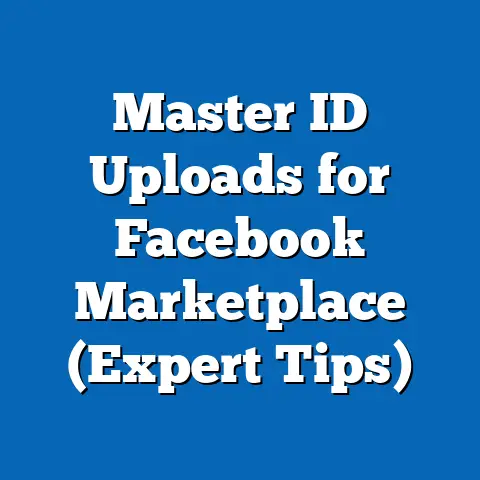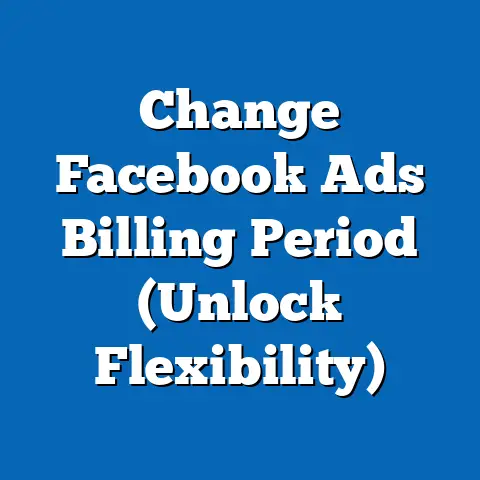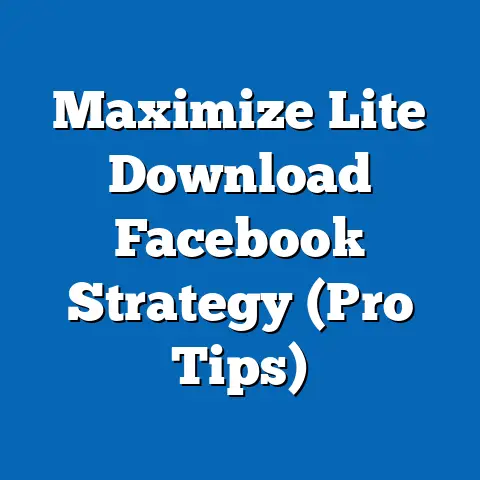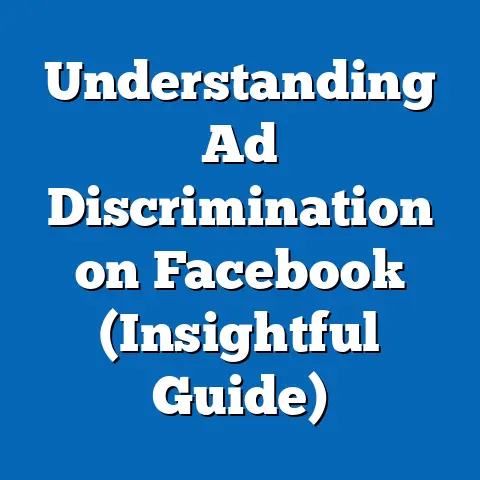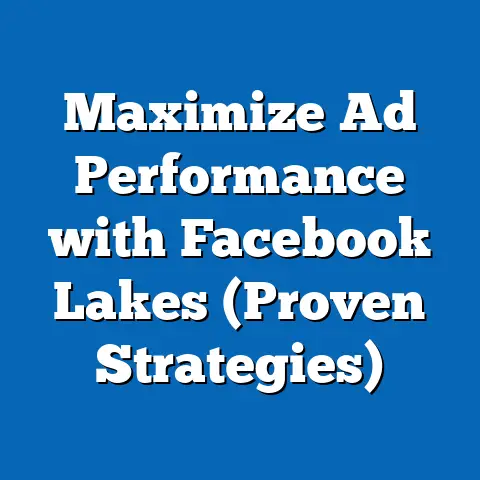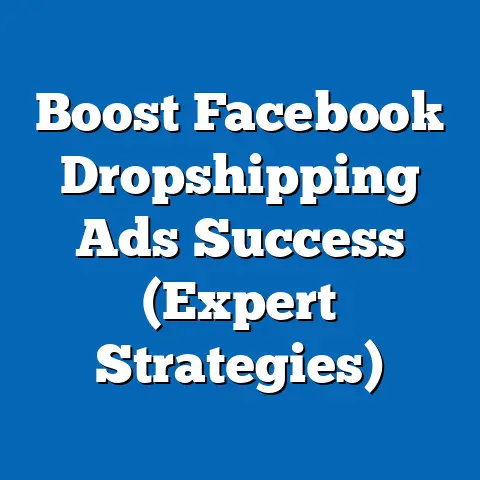How Facebook Ads Reach Mobile Users (Strategic Insights)
Like a well-loved smartphone, showing its age with scratches and a slightly dimmed screen, the mobile advertising landscape is constantly evolving. Just as we rely on our phones for nearly everything – communication, entertainment, navigation – businesses depend on mobile advertising to connect with their target audiences. And at the forefront of this mobile revolution stands Facebook, now Meta, with its powerful advertising platform.
I remember when mobile advertising was just a blip on the radar. I was working with a small e-commerce business back in 2010, and we were primarily focused on desktop ads. Mobile was an afterthought. Now? It’s the main event.
Reaching mobile users is no longer optional; it’s essential. Consider this: according to Statista, mobile devices generated 60.67% of global website traffic in the first quarter of 2024. That’s a massive audience that businesses simply can’t afford to ignore. Facebook, with its massive user base and sophisticated targeting capabilities, provides a powerful tool to tap into this mobile-first world.
The Mobile User Landscape
To effectively reach mobile users with Facebook Ads, you need to understand who they are, how they behave, and what they want. This isn’t just about demographics; it’s about understanding the nuances of mobile consumption and adapting your strategies accordingly.
Demographics of Mobile Users
The mobile user landscape is incredibly diverse, spanning all age groups, income levels, and geographical locations. However, certain trends are worth noting.
- Age: Younger generations are, unsurprisingly, the most avid mobile users. According to Pew Research Center, 96% of adults aged 18-29 own a smartphone. However, mobile usage is also growing rapidly among older demographics, with significant adoption rates among those aged 50 and older.
- Location: Mobile penetration varies across the globe. Emerging markets often exhibit higher rates of mobile-first internet access due to the affordability and accessibility of mobile devices compared to traditional computers.
- Interests: Mobile users have diverse interests, but social media, entertainment, and online shopping are consistently popular activities. Understanding the specific interests of your target audience within the mobile context is crucial for effective targeting.
The shift from desktop to mobile is undeniable. Think about your own behavior. How often do you reach for your phone instead of your computer to check social media, browse the web, or make a purchase? This trend has profound implications for advertisers. It means that ads need to be optimized for smaller screens, shorter attention spans, and on-the-go consumption.
Takeaway: Understand the demographics of mobile users within your target market. Consider age, location, interests, and the increasing reliance on mobile devices as the primary means of accessing the internet.
Mobile Consumption Trends
Understanding how mobile users consume content is just as vital as knowing who they are. Here are some key trends to consider:
- Social Media Dominance: Mobile devices are the primary platform for social media consumption. Facebook, Instagram, TikTok, and other social networks see the vast majority of their traffic coming from mobile users. This makes Facebook Ads an incredibly powerful tool for reaching this audience.
- App Usage: Mobile users spend a significant amount of time in apps. Games, productivity tools, and e-commerce platforms are all popular choices. Understanding the apps your target audience uses can inform your targeting strategies.
- Micro-Moments: Google defines “micro-moments” as intent-driven moments of decision-making and preference-shaping that occur throughout the day. Mobile devices enable these moments, as users instantly search for information, find solutions, or make purchases on the go.
- Video Consumption: Mobile devices are increasingly used for watching videos, both short-form and long-form. This makes video ads an effective way to capture attention and convey your message.
I’ve seen firsthand how adapting to these trends can impact campaign performance. For example, I once ran a campaign for a local restaurant that was struggling to attract lunchtime customers. By targeting mobile users during their “micro-moments” – specifically, those searching for “lunch near me” or browsing restaurant reviews – we saw a significant increase in foot traffic and sales.
Takeaway: Pay attention to mobile consumption trends. Optimize your ads for social media, consider app usage, and leverage micro-moments to connect with users at the right time and place.
Impact of Mobile on Advertising
The rise of mobile has fundamentally changed the way advertising works. Here are some key implications:
- Shorter Attention Spans: Mobile users are often multitasking or on the go, meaning they have shorter attention spans. Ads need to be concise, engaging, and immediately relevant to capture their attention.
- Smaller Screen Sizes: Ads need to be optimized for smaller screen sizes to ensure they are visually appealing and easy to read. This means using high-quality images and videos, clear typography, and a mobile-friendly layout.
- Location-Based Targeting: Mobile devices enable precise location-based targeting, allowing advertisers to reach users based on their current location or proximity to a specific business.
- Personalization: Mobile devices provide a wealth of data that can be used to personalize ads and make them more relevant to individual users. This includes demographic information, browsing history, app usage, and location data.
Takeaway: Recognize the unique challenges and opportunities presented by mobile advertising. Optimize your ads for shorter attention spans, smaller screen sizes, and leverage location-based targeting and personalization to improve engagement and conversion rates.
Understanding Facebook’s Mobile Advertising Ecosystem
Facebook’s advertising platform is a complex but powerful ecosystem for reaching mobile users. To succeed, you need to understand the different ad types, how the algorithm works, and Facebook’s commitment to a mobile-first approach.
Overview of Facebook Ads
Facebook offers a wide range of ad formats, each with its own strengths and weaknesses. Here are some of the most popular options for mobile advertising:
- Image Ads: These are simple but effective ads that consist of a single image and accompanying text. They are ideal for showcasing products, promoting events, or raising brand awareness.
- Video Ads: Video ads are highly engaging and can be used to tell stories, demonstrate products, or share testimonials. They are particularly effective on mobile, where video consumption is high.
- Carousel Ads: Carousel ads allow you to showcase multiple images or videos in a single ad unit. This is a great option for highlighting different features of a product, showcasing a range of products, or telling a story in a visual sequence.
- Collection Ads: Collection ads are designed for e-commerce businesses and allow users to browse and purchase products directly from the ad. They typically feature a main image or video, along with a selection of related products.
- Instant Experience Ads: These are full-screen, interactive ads that load quickly on mobile devices. They can be used to showcase products, tell stories, or provide immersive experiences.
- Lead Ads: Lead ads are designed to capture leads directly from mobile devices. They allow users to submit their contact information without leaving the Facebook app.
- Stories Ads: Stories Ads appear between users’ organic Stories content. They are full-screen and immersive, making them highly engaging for mobile users.
When choosing an ad format, consider your target audience, your advertising goals, and the type of content you want to share. For example, if you’re promoting a new product, a carousel ad or collection ad might be the best option. If you’re trying to raise brand awareness, a video ad or image ad might be more effective.
Takeaway: Familiarize yourself with the different ad formats available on Facebook and choose the ones that best align with your target audience, advertising goals, and content strategy.
Algorithm Insights
Facebook’s algorithm plays a crucial role in determining which ads are shown to which users. Understanding how the algorithm works is essential for optimizing your campaigns and maximizing your reach.
Here are some key factors that influence the algorithm:
- User Behavior: Facebook tracks a wide range of user behaviors, including the pages they like, the posts they interact with, the websites they visit, and the apps they use. This data is used to create detailed user profiles and target ads accordingly.
- Engagement History: The algorithm prioritizes ads that are likely to generate engagement, such as likes, comments, shares, and clicks. This means that creating compelling and relevant ads is crucial for success.
- Ad Relevance: Facebook assigns a relevance score to each ad based on how relevant it is to the target audience. Ads with higher relevance scores are more likely to be shown and will typically cost less.
- Bidding Strategy: Your bidding strategy also influences the algorithm. Facebook offers a variety of bidding options, including automatic bidding, manual bidding, and cost-per-result bidding. Choosing the right bidding strategy is essential for achieving your advertising goals within your budget.
- Ad Quality: Facebook considers the quality of your ads when determining which ads to show. This includes factors like the image or video quality, the clarity of the messaging, and the overall user experience.
I’ve learned that constantly monitoring ad performance and making adjustments based on the algorithm’s feedback is key. I once worked on a campaign where the relevance score was consistently low. After experimenting with different ad creatives and targeting options, we were able to significantly improve the relevance score and see a corresponding increase in engagement and conversions.
Takeaway: Understand the factors that influence Facebook’s algorithm and optimize your ads accordingly. Focus on creating relevant, engaging, and high-quality ads that resonate with your target audience.
Mobile-First Approach
Facebook is committed to a mobile-first approach in its ad delivery and design. This means that the platform is designed to prioritize the mobile user experience. Here are some examples of how Facebook implements this approach:
- Mobile-Optimized Ad Formats: Facebook offers a variety of ad formats that are specifically designed for mobile devices, such as Instant Experience ads and Stories ads.
- Fast Loading Times: Facebook prioritizes ads that load quickly on mobile devices to ensure a seamless user experience.
- Mobile-Friendly Website Previews: When users click on an ad that leads to a website, Facebook provides a mobile-friendly preview of the website to ensure it is optimized for smaller screens.
- Mobile App Integration: Facebook integrates seamlessly with mobile apps, allowing advertisers to target users based on their app usage and deliver ads directly within the app.
As an advertiser, you need to embrace this mobile-first approach. This means optimizing your ads for mobile devices, ensuring your website is mobile-friendly, and leveraging the mobile-specific features and capabilities of the Facebook platform.
Takeaway: Embrace Facebook’s mobile-first approach and optimize your ads for mobile devices. Ensure your website is mobile-friendly and leverage the platform’s mobile-specific features to improve the user experience and drive results.
Targeting Strategies for Mobile Users
Effective targeting is the cornerstone of successful Facebook advertising. By precisely identifying and reaching your ideal mobile audience, you can maximize your ad spend and drive meaningful results.
Audience Targeting Options
Facebook offers a rich set of audience targeting options that allow you to reach mobile users based on a variety of factors. These options can be broadly categorized into three main types:
- Core Audiences: Core audiences are defined based on demographic information (age, gender, location, education, etc.), interests (hobbies, activities, pages liked, etc.), and behaviors (purchase history, device usage, travel habits, etc.).
- Custom Audiences: Custom audiences allow you to target users based on your own data, such as customer lists, website traffic, or app activity. This is a powerful way to reach existing customers, re-engage website visitors, or target users who have interacted with your app.
- Lookalike Audiences: Lookalike audiences allow you to reach new users who are similar to your existing customers or website visitors. This is a great way to expand your reach and find new customers who are likely to be interested in your products or services.
Within each of these categories, Facebook offers a wide range of specific targeting options. For example, you can target users based on their job title, their relationship status, their parental status, or their political affiliation. You can also target users based on the type of mobile device they use, their operating system, or their internet connection speed.
Takeaway: Explore the full range of audience targeting options available on Facebook and experiment with different combinations to find the most effective way to reach your target mobile audience.
Geographic and Behavioral Targeting
Two particularly powerful targeting options for mobile users are geographic and behavioral targeting.
- Geographic Targeting: Geographic targeting allows you to reach users based on their location. This can be as broad as an entire country or as narrow as a specific zip code. You can also target users who are currently located in a specific area, who live in a specific area, or who have recently visited a specific area.
- Behavioral Targeting: Behavioral targeting allows you to reach users based on their online behavior, such as their purchase history, their website browsing activity, their app usage, or their travel habits. This is a great way to target users who are likely to be interested in your products or services based on their past behavior.
I once worked with a local bakery that wanted to increase its foot traffic. By using geographic targeting, we were able to reach mobile users who were within a 5-mile radius of the bakery. We also used behavioral targeting to target users who had previously searched for “bakery near me” or “pastries” on Google. This combination of geographic and behavioral targeting proved to be highly effective, resulting in a significant increase in foot traffic and sales.
Takeaway: Leverage geographic and behavioral targeting to reach mobile users based on their location and online behavior. This can be a highly effective way to target users who are likely to be interested in your products or services.
Retargeting Campaigns
Retargeting is a powerful strategy for re-engaging mobile users who have already interacted with your brand. This can include users who have visited your website, viewed your products, added items to their cart, or downloaded your app.
Retargeting campaigns can be used to:
- Remind users about products they viewed: Show users ads for products they viewed on your website but didn’t purchase.
- Encourage users to complete their purchase: Show users ads for items they added to their cart but didn’t check out.
- Promote special offers: Offer discounts or promotions to users who have previously interacted with your brand.
- Drive app downloads: Show ads to users who have visited your website but haven’t downloaded your app.
To run effective retargeting campaigns, you need to install the Facebook Pixel on your website or integrate the Facebook SDK into your app. This allows Facebook to track user activity and create custom audiences for retargeting.
Takeaway: Implement retargeting campaigns to re-engage mobile users who have already interacted with your brand. This can be a highly effective way to drive conversions and increase customer loyalty.
Creative Strategies for Mobile Ads
Even with the most precise targeting, your ads won’t succeed if they aren’t visually appealing and engaging. Creative strategies are essential for capturing the attention of mobile users and driving them to take action.
Ad Design Best Practices
Here are some best practices for designing effective mobile ads:
- Concise Messaging: Mobile users have short attention spans, so your messaging needs to be clear, concise, and to the point. Focus on the key benefits of your product or service and avoid using jargon or technical terms.
- Engaging Visuals: Use high-quality images and videos that are visually appealing and relevant to your target audience. Make sure your visuals are optimized for smaller screen sizes and load quickly on mobile devices.
- Clear Call-to-Action: Tell users exactly what you want them to do, whether it’s visiting your website, downloading your app, or making a purchase. Use a clear and compelling call-to-action that stands out from the rest of your ad.
- Mobile-Friendly Layout: Design your ads with a mobile-friendly layout that is easy to read and navigate on smaller screens. Use clear typography, plenty of white space, and a simple design.
- Brand Consistency: Ensure your ads are consistent with your overall brand identity. Use the same colors, fonts, and imagery that you use on your website and other marketing materials.
I’ve found that testing different ad creatives is crucial for identifying what resonates with your target audience. I often run A/B tests to compare different images, headlines, and call-to-actions. This allows me to identify the most effective elements and optimize my ads for maximum performance.
Takeaway: Follow ad design best practices to create visually appealing and engaging mobile ads that capture attention and drive action.
Video and Interactive Content
Video ads and interactive content are particularly effective for capturing the attention of mobile users.
- Video Ads: Video ads are highly engaging and can be used to tell stories, demonstrate products, or share testimonials. They are particularly effective on mobile, where video consumption is high. Keep your videos short and to the point, and make sure they are optimized for mobile devices.
- Interactive Content: Interactive content, such as polls, quizzes, and surveys, can be a great way to engage mobile users and collect valuable data. These types of ads can be used to generate leads, drive website traffic, or increase brand awareness.
When creating video ads, consider using captions to make them accessible to users who are watching with the sound off. Also, make sure your videos are visually appealing and grab attention within the first few seconds.
Takeaway: Leverage video ads and interactive content to engage mobile users and collect valuable data.
A/B Testing for Mobile Ads
A/B testing is essential for optimizing ad performance on mobile. By testing different variations of your ads, you can identify what resonates with your target audience and improve your results.
Here are some common variables to test:
- Images and Videos: Test different images and videos to see which ones generate the most engagement.
- Headlines: Test different headlines to see which ones capture attention and drive clicks.
- Call-to-Actions: Test different call-to-actions to see which ones are most effective at driving conversions.
- Targeting Options: Test different targeting options to see which ones reach the most relevant audience.
- Ad Placement: Test different ad placements to see which ones generate the best results.
When running A/B tests, make sure you only test one variable at a time. This will allow you to accurately measure the impact of each variable and identify the most effective combination.
Takeaway: Implement A/B testing to optimize ad performance on mobile. Test different variations of your ads to identify what resonates with your target audience and improve your results.
Measuring Success in Mobile Advertising
Measuring the success of your mobile ad campaigns is crucial for understanding what’s working and what’s not. By tracking key performance indicators (KPIs) and using the right analytics tools, you can optimize your campaigns and maximize your return on ad spend.
Key Performance Indicators (KPIs)
Here are some important KPIs to track for mobile ad campaigns:
- Click-Through Rate (CTR): The percentage of users who click on your ad after seeing it. A high CTR indicates that your ad is relevant and engaging.
- Conversion Rate: The percentage of users who complete a desired action after clicking on your ad, such as making a purchase, downloading an app, or filling out a form.
- Cost Per Click (CPC): The amount you pay each time someone clicks on your ad. A lower CPC indicates that your ads are efficient and cost-effective.
- Cost Per Acquisition (CPA): The amount you pay for each conversion. A lower CPA indicates that your ads are generating a good return on investment.
- Return on Ad Spend (ROAS): The amount of revenue you generate for every dollar you spend on advertising. A higher ROAS indicates that your ads are profitable.
- Reach: The number of unique users who saw your ad.
- Frequency: The average number of times each user saw your ad.
When setting KPIs, it’s important to consider your advertising goals. For example, if you’re trying to increase brand awareness, you might focus on reach and frequency. If you’re trying to drive sales, you might focus on conversion rate and ROAS.
Takeaway: Identify the key performance indicators (KPIs) that are most relevant to your advertising goals and track them regularly to measure the success of your mobile ad campaigns.
Analytics Tools
Facebook offers a variety of analytics tools that you can use to track and analyze the performance of your mobile ad campaigns. These tools include:
- Facebook Ads Manager: This is the primary tool for managing and analyzing your Facebook ad campaigns. It provides detailed data on impressions, clicks, conversions, and other key metrics.
- Facebook Analytics: This tool allows you to track user behavior on your website and app. It provides insights into user demographics, interests, and engagement patterns.
- Third-Party Analytics Platforms: There are also a variety of third-party analytics platforms that you can use to track and analyze the performance of your mobile ad campaigns, such as Google Analytics, Mixpanel, and Amplitude.
I recommend using a combination of these tools to get a comprehensive view of your ad performance. Facebook Ads Manager provides detailed data on your ad campaigns, while Facebook Analytics and third-party platforms provide insights into user behavior on your website and app.
Takeaway: Utilize Facebook’s analytics tools and third-party platforms to track and analyze the performance of your mobile ad campaigns.
Case Studies
Analyzing successful mobile ad campaigns on Facebook can provide valuable insights and inspiration for your own strategies.
For example, a study by Facebook found that using mobile-optimized video ads resulted in a 27% increase in brand awareness and a 14% increase in purchase intent. Another study found that using carousel ads resulted in a 72% increase in click-through rate compared to single-image ads.
By studying these case studies, you can learn what strategies have worked for other advertisers and apply those lessons to your own campaigns.
Takeaway: Research and analyze successful mobile ad campaigns on Facebook to gain insights and inspiration for your own strategies.
Challenges and Opportunities in Mobile Advertising
Mobile advertising on Facebook is a dynamic and ever-evolving landscape. It presents both challenges and opportunities that advertisers need to navigate to succeed.
Privacy Concerns and Regulations
Privacy concerns and regulations, such as the General Data Protection Regulation (GDPR) and the California Consumer Privacy Act (CCPA), have had a significant impact on mobile advertising. These regulations give users more control over their data and require advertisers to obtain consent before collecting and using personal information.
To comply with these regulations, advertisers need to:
- Obtain Consent: Obtain explicit consent from users before collecting and using their data.
- Be Transparent: Be transparent about how you are collecting and using user data.
- Provide Opt-Out Options: Provide users with the option to opt-out of data collection and targeted advertising.
I’ve seen firsthand how important it is to prioritize privacy when running Facebook ad campaigns. I always make sure to obtain consent from users, be transparent about my data collection practices, and provide opt-out options. This not only helps me comply with regulations but also builds trust with my audience.
Takeaway: Prioritize privacy and comply with regulations such as GDPR and CCPA when running mobile ad campaigns. Obtain consent from users, be transparent about your data collection practices, and provide opt-out options.
Ad Fatigue and Over-Saturation
Ad fatigue and over-saturation are common challenges in mobile advertising. Users are constantly bombarded with ads, which can lead to ad blindness and decreased engagement.
To combat ad fatigue, advertisers need to:
- Rotate Ad Creatives: Regularly rotate your ad creatives to keep your ads fresh and engaging.
- Target Different Audiences: Experiment with different targeting options to reach new audiences.
- Use Different Ad Formats: Use a variety of ad formats to keep your ads from becoming stale.
- Personalize Your Ads: Personalize your ads to make them more relevant to individual users.
Takeaway: Combat ad fatigue and over-saturation by rotating ad creatives, targeting different audiences, using different ad formats, and personalizing your ads.
Future Trends
The future of mobile advertising on Facebook is likely to be shaped by several key trends, including:
- Augmented Reality (AR) and Virtual Reality (VR): AR and VR technologies are becoming increasingly popular, and they offer new opportunities for advertisers to create immersive and engaging experiences.
- Artificial Intelligence (AI): AI is being used to personalize ads, optimize targeting, and automate ad creation.
- Privacy-Enhancing Technologies: Privacy-enhancing technologies, such as differential privacy and federated learning, are being developed to protect user privacy while still allowing advertisers to target ads effectively.
By staying ahead of these trends, advertisers can position themselves for success in the future of mobile advertising.
Takeaway: Stay informed about future trends in mobile advertising, such as AR/VR, AI, and privacy-enhancing technologies, and adapt your strategies accordingly.
Conclusion
Reaching mobile users through Facebook Ads is a powerful strategy for businesses of all sizes. However, success requires a deep understanding of the mobile user landscape, a mastery of Facebook’s advertising ecosystem, and a commitment to creative and data-driven strategies.
We’ve covered a lot of ground in this article, from understanding the demographics and behaviors of mobile users to navigating Facebook’s algorithm and crafting compelling ad creatives. We’ve also discussed the importance of measuring success, navigating privacy concerns, and staying ahead of future trends.
The key takeaway is that mobile advertising is not a one-size-fits-all approach. It requires continuous adaptation, experimentation, and a willingness to embrace new technologies and strategies. By staying informed, being creative, and prioritizing the user experience, you can unlock the power of Facebook mobile ads and achieve your advertising goals.
So, go forth and conquer the mobile advertising landscape! The screen may be small, but the opportunities are vast.

